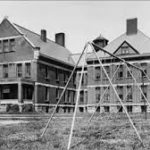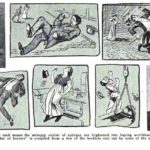The argument can certainly be made that very few patients at the Canton Asylum for Insane Indians were what might be called “classically insane,” with complete disassociation from reality, a complete change in personality, or a complete inability to function within their traditional society. It seems clear from records that many patients simply manifested symptoms derived from epilepsy, alcoholism, deterioration from the last stages of syphilis, and so on and were diagnosed with insanity on the basis of them.
White patients with these same conditions and conditions were also considered insane and were likewise diagnosed. But, white patients were usually institutionalized close to home, which was not the case for Canton Asylum patients. These patients came from reservations all over the country; the long distances made it especially difficult for family and friends to visit. This added one more level of hardship that their white counterparts typically didn’t suffer, and it was certainly no trivial matter.
In speaking about Native Americans in general, J. Lee Humfreville (who served in the U.S. Army on the Southern Plains between 1862 and 1874) wrote in 1903 that “the affection of an Indian for his family and children is particularly marked, although rarely demonstrative.” Humfreville was writing specifically about Indian captives and continued, “. . . they have been known to die of homesickness, and not infrequently went crazy from the refusal of their captors to allow them to return to their kindred and friends.”
Besides the torment of whatever physical or mental condition that had brought a patient to the Canton Asylum, homesickness would have added an excruciating second layer of pain. Superintendent Hummer–like many other asylum superintendents–actively discouraged visitors because he thought they caused setbacks for the patient. Consequently, many patients could add depression or melancholy to their list of symptoms and seemingly validate their need to be at an institution.








